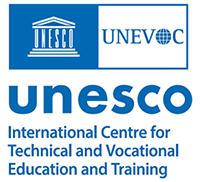
The UNESCO-UNEVOC International Centre: Who We Are | What We Do | Working With Us | Get in Touch
The UNEVOC Network: Learn About the Network | UNEVOC Network Directory
For Members: UNEVOC Centre Dashboard
Thematic Areas: Inclusion and Youth | Digital Transformation | Private Sector Engagement | SDGs and Greening TVET
Our Key Programmes & Projects: BILT: Bridging Innovation and Learning in TVET | Building TVET resilience | TVET Leadership Programme | WYSD: World Youth Skills Day
Past Activities: COVID-19 response | i-hubs project | TVET Global Forums | Virtual Conferences | YEM Knowledge Portal
Our Services & Resources: Publications | TVET Forum | TVET Country Profiles | TVETipedia Glossary | Innovative and Promising Practices | Toolkits for TVET Providers | Entrepreneurial Learning Guide
Events: Major TVET Events | UNEVOC Network News
Two principles characterize most attempts to define quality in education: the first identifies learners’ cognitive development as the major explicit objective of all education systems. Accordingly, the success with which systems achieve this is one indicator of their quality. The second emphasizes education’s role in promoting values and attitudes of responsible citizenship and in nurturing creative and emotional development. The achievement of these objectives is more difficult to assess and compare across countries.
 Source:
Source:Meeting the requirements of nationally agreed outcomes and performance/assessment criteria, thus facilitating both provision and monitoring.
The level of satisfaction with and effectiveness of TVET Systems and TVET Institutions, their products and services, established through conformity with the requirements set by clients and stakeholders. (Definition also used by Queensland government)